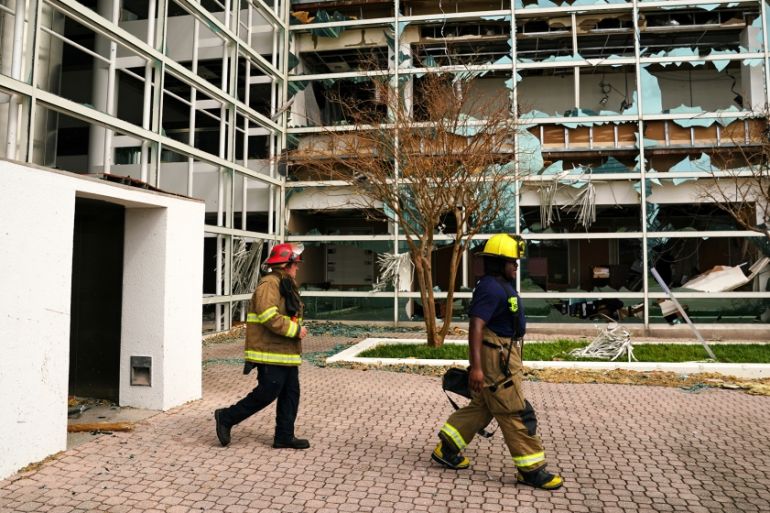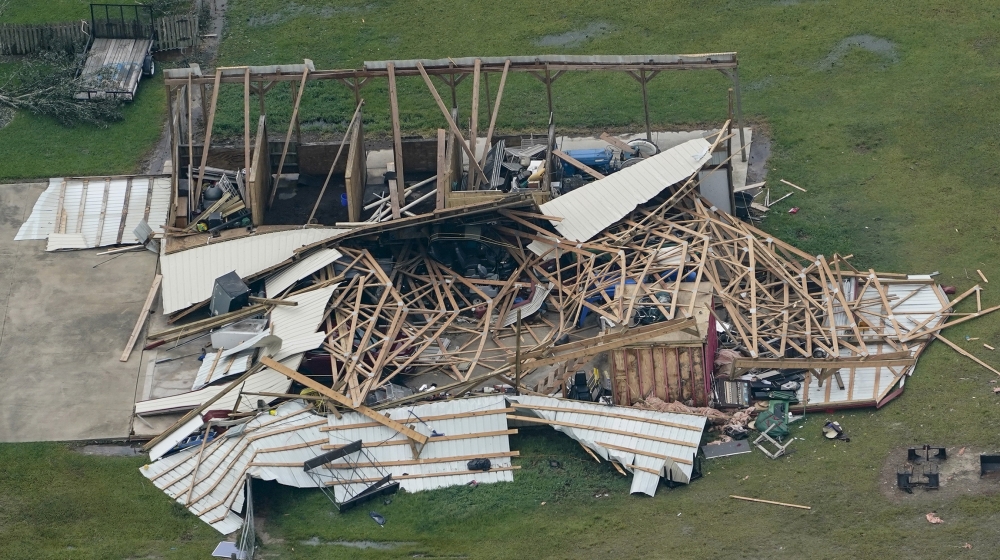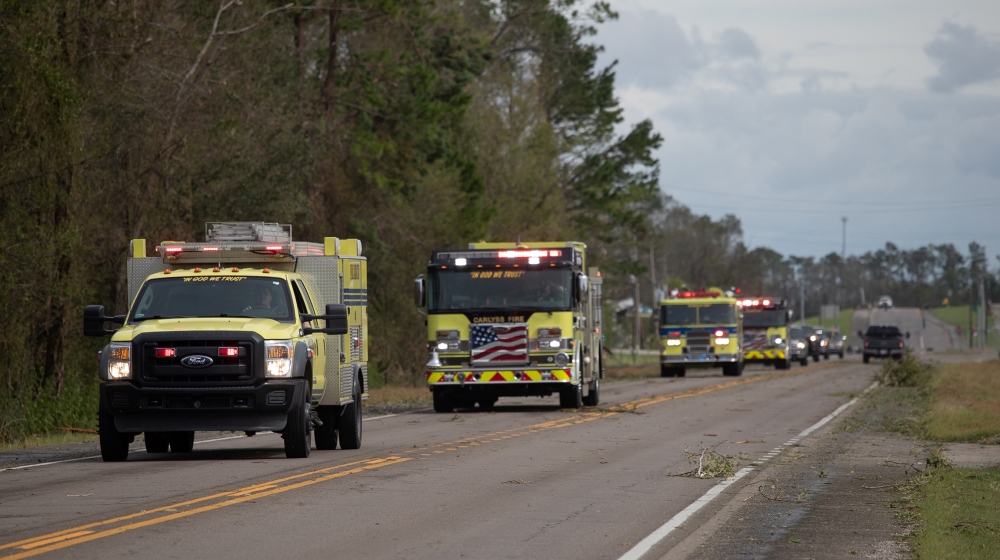Several killed as Hurricane Laura slams southwestern Louisiana
One of the most powerful storms to hit the state destroys buildings, causes floods as official warns of more fatalities.

Hurricane Laura ripped through southwestern Louisiana on Thursday, destroying buildings in the city of Lake Charles and killing at least six people after making landfall in the early morning as one of the most powerful storms to hit the state.
The hurricane’s first reported US fatality was a 14-year-old girl in Leesville, Louisiana, who died when a tree fell on her house, a spokeswoman for Governor John Bel Edwards said.
Keep reading
list of 4 itemsPhotos: Dubai reels from flood chaos as record rains lash UAE
Dubai submerged in floods as UAE gets over a year’s worth of rain in hours
Heavy rains kill 18 in Oman as flash floods lash UAE
“We do expect that there could be more fatalities,” the spokeswoman, Christina Stephens, said on Twitter.
A chemical plant caught fire in Laura’s wake on Thursday morning in Westlake, Louisiana, 4 miles (6.4 km) west of Lake Charles, sending thick black smoke billowing into the sky.
Laura appeared to have caused less damage than anticipated, but officials said it remained a dangerous storm and it would take some days to assess its impact.
“This was the most powerful storm to ever make landfall in Louisiana,” Edwards told a news conference. “It’s continuing to cause damage and life-threatening conditions.”
Residents of Lake Charles heard Laura’s winds howling and the sound of breaking glass as the storm passed through the industrial city of 78,000 in the hour after landfall.

The windows of the city’s 22-floor Capital One Tower were blown out, street signs were toppled and pieces of wooden fence and debris from collapsed buildings lay scattered in the flooded streets, video footage shared on social media showed.
“It looks like 1,000 tornadoes went through here. It’s just destruction everywhere,” said Brett Geymann, who rode out the storm with three family members in Moss Bluff, near Lake Charles. He described Laura passing over his house with the roar of a jet engine around 2am.
“There are houses that are totally gone. They were there yesterday, but now gone,” he told the Associated Press news agency.
Storm weakens after landfall
Laura made landfall just before 1am as a Category 4 storm packing winds of 150 mph (240 kph) in the small town of Cameron, Louisiana, the National Hurricane Center (NHC) said.
It rapidly weakened to a Category 1 storm on Thursday morning with maximum sustained winds of 75 mph (120 kph) and was forecast to become a tropical storm later in the day.
The NHC warned that high water levels would persist along the Gulf Coast for several hours as Laura moved north and then northeast.

Besides threatening life, the storm slammed the heart of the US oil industry, forcing oil rigs and refineries to shut down production.
The Port of Lake Charles remained closed as workers were unable to enter or exit the facility because of uprooted trees and fallen electricity lines.
The port avoided significant flooding but lost power on Thursday morning, manager of security and safety Ed Manint said, according to Reuters news agency.
‘Less surge than we thought’
Federal Emergency Management Agency (FEMA) Administrator Pete Gaynor told Fox News that the agency would make storm damage assessments on Thursday and had the resources to respond to the storm now, adding he expected to see significant damage from wind and building damage.
“I think we’re generally fortunate – less surge than we thought,” Gaynor said.
The NHC on Wednesday predicted storm surge would be “unsurvivable” and could penetrate up to 40 miles inland. While the worst projections had not materialised, damaging winds and flooding rainfall would continue spreading inland later on Thursday, the NHC said.
Laura could spawn tornadoes on Thursday over Louisiana, Arkansas and western Mississippi, and was expected to drop 4 to 8 inches of rain (101 to 203 mm) across portions of that region, the NHC said.
US President Donald Trump on Thursday approved an emergency declaration for Arkansas, the White House said, authorising federal officials to coordinate relief efforts and freeing up federal funds. He had approved an emergency declaration for Texas on Monday.
Trump visited FEMA’s headquarters in the afternoon for a briefing on the hurricane.

Texas largely spared
The eastern coastal counties of Texas that had braced for the worst were largely spared Laura’s rage.
Galveston’s acting mayor, Craig Brown, told MSNBC he was cancelling the island city’s evacuation on Thursday after the storm turned more towards Louisiana. The mayor of Beaumont, Texas, Becky Ames, told MSNBC the situation was “manageable”.
Texas Governor Greg Abbott was planning to travel to east Texas to survey the damage on Thursday, his spokesman said.
Around 867,000 homes and businesses in Louisiana, Arkansas and Texas were without power on Thursday afternoon.